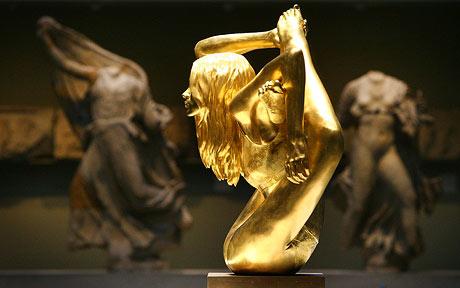
The Bankers Were There, Talking Art, Money – and China
The Art Newspaper reported Thursday that a one-day private conference in Florence, Italy in October convened bankers, collectors, curators and academics for discussions on the future of art and finance – and China’s clout derived clear consensus among the participants who included the Governor of the Bank of England, officials from the European Central Bank, the US Federal Reserve, the Swiss National Bank, and the CEO of Sotheby’s.
The organizer was Palazzo Strozzi Foundation’s director, James Bradburne,who provided the venue of the Palazzo Strozzi to the meeting as well.
Palazzo Strozzi, a 5-year-old private-public partnership of the city and province of Florence and private funders, is currently hosting an art show: “Money and Beauty. Bankers, Botticelli, and the Bonfire of the Vanities.” The exhibit’s opening statement, “No Bankers. No Renaissance,” referenced the financiers who made Italy’s cinquecento and seicento marvels in art possible, noted the Art Newspaper writer Robert Hewison, who was prohibited from attributing who said what at the conference – see the full article link here – but noted the key conclusion:
China has become the largest market for art, both indigenous and Western, but the Gulf, India, Singapore, and Taiwan also have cash and cultural power. There was much debate as to whether financial centres necessarily became cultural centres, but the consensus was, in the words of one delegate who certainly knew what he was talking about, “art tracks money and power”. Abu Dhabi’s plans may be on hold, but there is no doubt about the rise of China.
Palazzo Strozzi Foundation calls itself an experiment in “sustainable innovation” that is attempting to catalyze cultural change. “Renewing the image of an art city” is a study it commissioned which deals in cities including Barcelona and Vienna, and which could be of some interest in to a US city like Santa Fe. A contemporary exhibition, “Declining Democracy: Rethinking Democracy Between Utopia and Participation” reflects what writer Hewison says is “an effort to put Florence back on the map” by this foundation engaged in Europe with what many US consortiums appear engaged with here: a seeking out of how arts funding and the arts can continue to mingle for not just private good.
Whether or not Marc Quinn’s Kate Moss in Gold relates, a lifesize statue of the supermodel that used 10 kilos of 24-karat gold and is supposedly the largest solid gold statue of a figure since the Pharaohs, it seems an apt way to illustrate this article, as it fetched $900,000 at Sotheby’s in October. For factual clarity, the piece was not included in either art show mentioned.
http://www.youtube.com/watch?v=Ik2bgskD-YM
